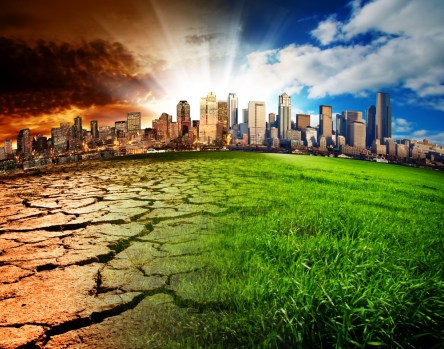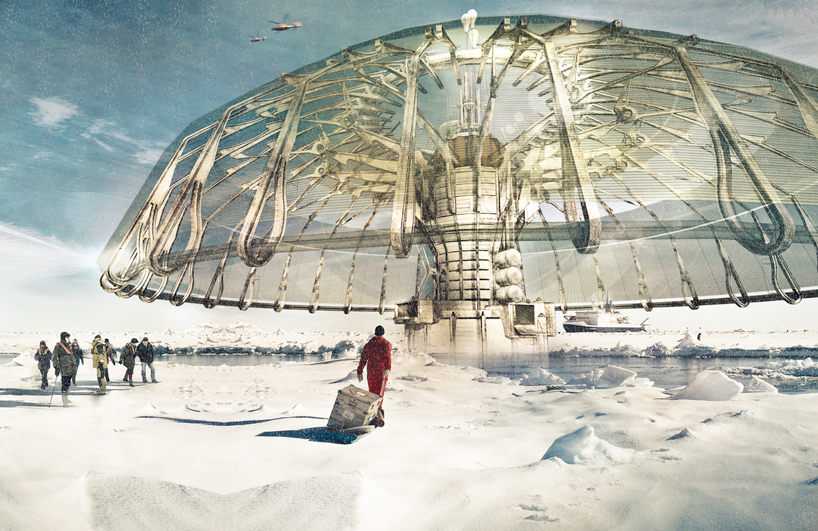Treaties and international accords can certainly trigger change, but most of the time the real action happens on the ground. Grassroots campaigns and public support can often pick up momentum, powered by the actions of small groups and individuals committed to a cause. As a result, when it comes to global issues like sustainability, renewable energy and climate change, cities have to power to make a big difference. “There is no single solution for solving global climate change,” declares the C40 Cities organization, “but cities have the ability, capacity and will to lead.” “We believe that a global future lies in urban innovation and action,” the group states on their website. “As the majority of future humans will live in cities, it just makes sense that our solution to climate change will reside there too. A Costly Climate While images of starving polar bears and collapsing glaciers have come to symbolize the environmental impact of a warming planet, the economic effects felt by cities are equally significant. According to a new study published in Nature Climate Change, large metrolpolitan areas experience the economic consequences of climate change at a rate three times higher than the less populated regions of the world. Some of the costs are the result of the “urban heat island effect.” Because cities often include huge swathes of land covered in pavement and concrete buildings, the heat those materials absorb is emanated back out into the atmosphere, resulting in temperature increases as high as 19˚F. Researchers have dubbed Los Angeles an “urban heat archipelago,” for example, because urban sprawl has led to several “islands” spread out across the Los Angeles Basin. “It’s like a whole chain of urban heat islands that run into each other,” explained Gina Solomon, Deputy Secretary for Science...
Sustainable Urban
Skyscrapers lead the way
With the rapid development of ecological urbanism and sustainable urban design, cities are destined to become hubs of innovation and technological breakthroughs. Over the last decades, the green building movement has grown a great deal, evolving from a tiny niche in architectural design to a global trend impacting all aspects of human existence. Much attention has been given to creating socially inclusive habitats for city inhabitants, sensitive to the environment and capable of fostering healthy communities. Closely related to the principle of smart growth, vertical living has been a real solution to many of the urban challenges, including the consistent demographic growth. According to the U.S. Census Bureau, the nation’s urban population increased by 12.1 percent from 2000 to 2010, outpacing the nation’s overall growth rate of 9.7 percent for the same period. As the economy straightens, innovative projects are beginning to take shape all across the U.S., with architects focused on delivering state-of-the-art high-rise structures heavy on sustainable elements. In an effort to promote and highlight the benefits of vertical living, eVolo magazine has created the Skyscraper Competition, a speculative design contest challenging architects and civil engineers around the world to bring out their visionary skills. Since 2006 when the initiative was officially launched, the publication received more than 5,000 projects exploring the future of building high. Not only are these ventures incorporating principles of smart living, technology, efficiency, aesthetics and eco-friendly practices into their design, but they also aim to challenge the way we understand vertical architecture and its relationship with the natural and built environments. For the 2013 competition, the journal received 625 projects from all continents and 83 different countries, all aspiring to positively change the face of our cities. Assessing contestants based on several criteria, including creativity, ingenuity, and understanding of dynamic and adaptive vertical communities, the jury selected 3 winners and 24 honorable mentions. The first place was awarded to Derek Pirozzi from the United States, for his revolutionary “Polar Umbrella,” (right) a cutting-edge super-structure whose primary objective is to rebuild the arctic layers and cool down the Earth’s surface by reducing heat gain in vulnerable arctic regions. Featuring desalinization and power facilities, this arctic skyscraper becomes a floating metropolis equipped with NOAA (National Oceanic and Atmospheric Administration) research laboratories, renewable power stations, dormitory-style housing units, eco-tourist attractions, and ecological habitats for wildlife. Darius Maïkoff and Elodie Godo from France landed in second place with their “Phobia Skyscraper,” (below left) a modular suburban residential development in Paris, France designed to morph and progress over time, responding to the needs and desires of its residents. The project seeks to revive an abandoned industrial area in Paris that features excellent views of the city and an extensive transportation network. The third place was awarded to Ting Xu and Yiming Chen from China, for their project “Light Park,” a floating skyscraper reminding of a surreal realm where zeppelins rule the skies. The concept itself is amazing indeed, providing a sustainable platform for the future growth of the world’s mega-cities. The Light Park stays afloat thanks to a large, mushroom cap-like helium-filled balloon at its top, and solar-powered propellers directly below. Amidst the honorable mentions, Michael Charters’ “Big Wood” skyscraper (below right) stands out as a masterpiece of modern engineering, combining technological advances with sustainability features and conservation, aiming to deliver an enhanced living experience. Multi-story wooden structures are nothing new to the urban picture, yet realistic aspirations for heights of 20, 30, 40 stories certainly require considerable engineering efforts. Big Wood is a prototype on mass timber construction that offers the possibility to build more responsibly while actively sequestering pollutants from our cities. The large-scale mixed-use university complex would be located in Chicago, the third most populous urbanized area in the country (8,608,208). While the construction industry accounts for 39% of man-made carbon emissions, timber emerges as a greener alternative to steel and concrete, employing less...


